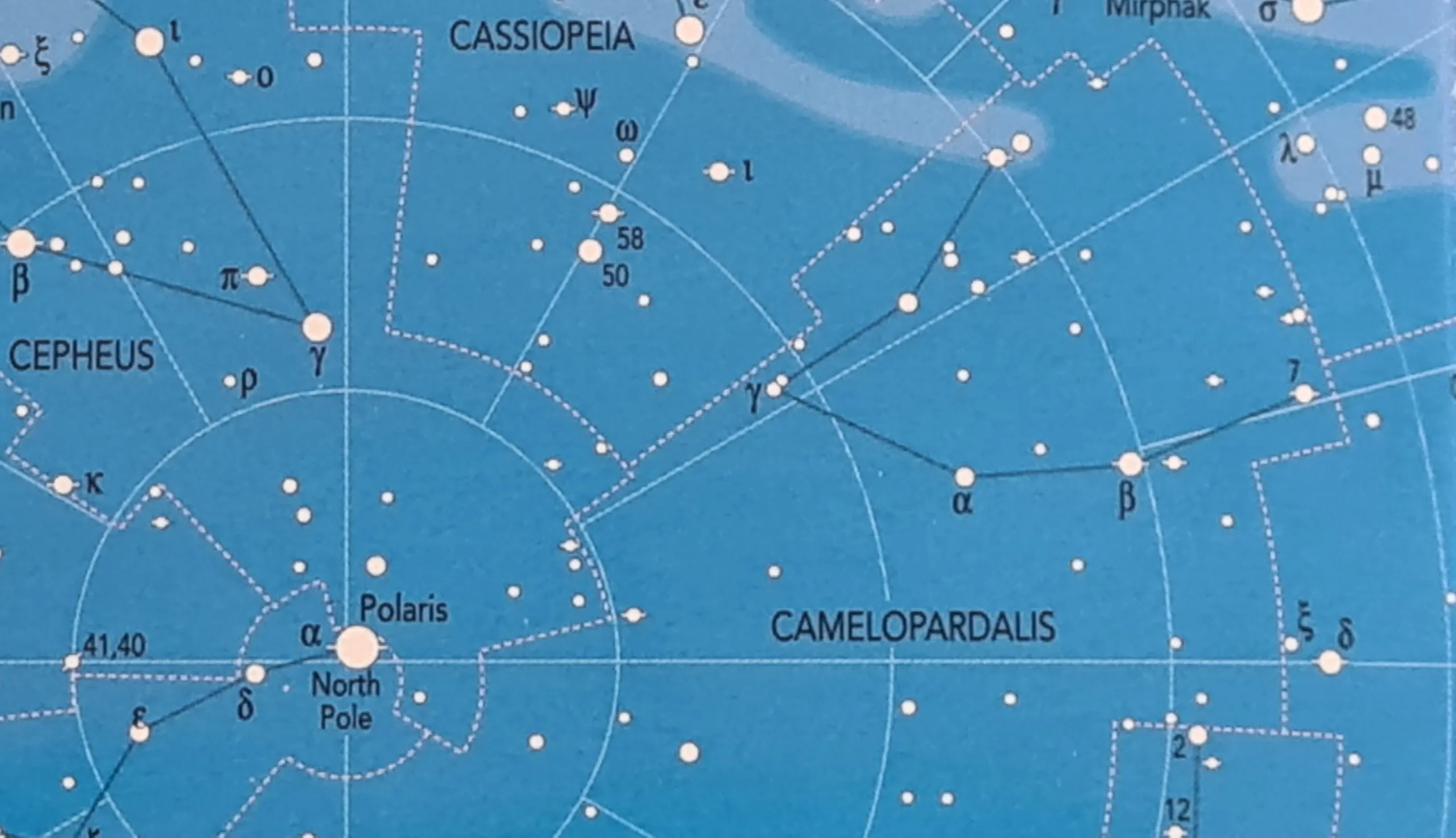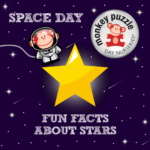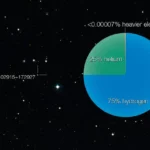Get ready for a celestial adventure that will light up your knowledge of constellations! We’ll dive into the stories behind these twinkling patterns in the night sky, traveling back in time to see how ancient civilizations used them to keep track of the seasons, navigate by the stars, and imagine amazing tales. Along the way, we’ll uncover the science behind constellations, finding out what they’re made of and how they change with the seasons. Whether you’re a space enthusiast or just looking to learn more about the wonders above, our guide to the 88 recognized constellations will make the night sky come alive with newfound meaning.
Fun Facts About Constellations
Fact 1: They’re Not Really There!
While we see constellations as patterns in the sky, the stars themselves are not actually close together. It’s all a matter of perspective! Imagine looking at scattered fireflies in a forest; some appear closer, others farther, creating an illusion of patterns. Constellations work similarly, with stars at vastly different distances appearing grouped from our viewpoint on Earth.
Fact 2: 88 Official Star Patterns
Ever wonder who decides which constellations are “real”? That responsibility falls upon the International Astronomical Union (IAU), the governing body for space naming conventions. They’ve officially recognized 88 constellations, acting as celestial states on a vast star map, each with defined boundaries and unique stories.
Fact 3: Ancient Timekeepers
Long before clocks and calendars, people relied on the stars for timekeeping. Ancient civilizations were adept at reading the night sky, observing how constellations shifted positions throughout the year. They used these celestial patterns to mark seasons, schedule crop planting, and even plan festivals – a giant celestial calendar guiding their lives.
Fact 4: More Than Just Stars
Gazing at a constellation means seeing beyond the individual stars. These celestial groupings can contain galaxies, shimmering nebulae (giant clouds of gas and dust), and other mind-blowing objects. It’s a cosmic treasure hunt waiting to be explored!
Fact 5: Stories in the Stars
Have you ever wondered how constellations got their names? Many originate from ancient myths and legends. The Greeks, Romans, Egyptians, and cultures worldwide looked up at the stars and saw heroes, monsters, and fantastical creatures, their stories woven into the fabric of the constellations themselves. These tales, passed down through generations, connect us to the imaginations of those who came before.
Fact 6: Mapping the Heavens
Imagine the challenge of mapping the entire night sky! Celestial cartographers have dedicated themselves to this task for centuries, charting the stars and creating guides for navigation, astronomical discoveries, and backyard exploration. Their work allows us to navigate the cosmos from our own backyards.
Fact 7: Celestial Navigation
Long before GPS, constellations were essential tools for navigation. Sailors relied on their knowledge of the stars to cross vast oceans and reach distant lands. This skill, requiring incredible observation and knowledge, enabled exploration, trade, and cultural exchange across the globe.
Fact 8: Different Views, Different Stars
The Earth’s spherical shape means stargazers in different hemispheres see different constellations. Traveling to the Southern Hemisphere reveals entirely new constellations compared to the Northern Hemisphere, offering unique celestial views and a whole new set of star stories to discover!
Unveiling the Mysteries: A Guide to the 88 Constellations
Constellations, those captivating starry patterns, have fascinated humans for ages. Let’s explore why these formations are so special and how we can learn to identify them in the night sky.
Think of constellations as a celestial connect-the-dots game. Our ancestors looked up, identified distinct star formations, and wove stories around them. These stories, passed down through generations, became entwined with the constellations, imbuing them with a rich tapestry of myths and legends.
Learning to recognize these constellations is like unlocking a secret code to the night sky. It’s easier than you might think! Once you start recognizing key patterns, you can confidently navigate the expanse above us. Share this knowledge with friends and family, recounting the fascinating stories behind these celestial groupings.
Now, let’s talk about the Zodiac. You’ve likely heard of the 12 Zodiac signs – Aries, Taurus, Gemini, and so on. These signs are based on the constellations lying along the ecliptic, the path the Sun appears to travel across the sky throughout the year. These constellations have held special significance in astrology and cultural beliefs for centuries.
But constellations are more than just pretty patterns; they offer a window into the vastness of the cosmos. When we study constellations, we’re peering into the depths of space. Those twinkling points of light might be stars vastly larger than our sun, or distant galaxies, each containing billions of stars themselves.
So, next time you look up at the night sky, remember that you’re not just seeing a random scattering of stars. You’re looking at constellations, each one a piece of a cosmic puzzle humans have been trying to solve for millennia. With a little practice, you too can decode the night sky and unlock the wonders it holds.
Ancient Myths and Legends of the Stars
The night sky, a black canvas sprinkled with twinkling diamonds, has always captivated the human imagination. For centuries, people have gazed upon those stars and spun stories, weaving intricate tales of gods and monsters, heroes and lovers. These myths, passed down through generations, offer a glimpse into the rich tapestry of human storytelling and our relationship with the vast, unknown cosmos.
Take Orion, for example. His constellation, easily recognizable by the three stars that form his belt, tells the story of a mighty hunter from Greek mythology. Orion boasted that he could kill any beast on Earth, which angered Gaia, the Earth Mother. She sent a scorpion to defeat him, and the two were eternally placed in the heavens – forever locked in a celestial standoff. Even today, the constellation Scorpius disappears below the horizon as Orion rises, a testament to the enduring power of these ancient tales.
Then there’s Ursa Major, the Great Bear. This prominent constellation, visible in the northern hemisphere throughout the year, represents Callisto, a nymph who caught the eye of Zeus. Hera, Zeus’s jealous wife, transformed Callisto into a bear. To protect his love, Zeus placed Callisto among the stars as Ursa Major, forever watching over the night sky.
These star-studded stories go far beyond Greece. Native American cultures have their own rich traditions tied to the cosmos. The constellation we know as Ursa Minor, the Little Bear, is known to them as the “Bear Mother,” guiding lost travelers and offering hope and direction in the dark.
These myths and legends, whispered across cultures and continents, are more than just entertaining stories. They served as mnemonic devices, helping people navigate by the stars and track the changing seasons. They also provided moral guidance, illustrating the consequences of pride, jealousy, and bravery.
While we now understand the science behind these celestial objects, the stories retain their power to enchant and inspire. So the next time you find yourself beneath a star-filled sky, take a moment to remember the myths and legends written in those twinkling lights. You’ll be connecting with a tradition of storytelling as old as humanity itself.
Navigating the Night Sky: Constellations as Celestial Guides
Imagine looking up at the night sky, a sea of twinkling stars spread out before you. For centuries, people have been doing just that, using those stars to find their way, tell stories, and even track the changing seasons. These star patterns, known as constellations, aren’t just random arrangements; they are celestial guides that have helped humans understand and navigate the world around them.
Starry Roadmaps: Using Constellations for Navigation
Long before the days of GPS and compasses, sailors and explorers relied on the stars as their guides. By learning to recognize different constellations, they could determine their location and chart a course across vast oceans. Picture yourself as a sailor on the open sea, the North Star, found in the tail of Ursa Minor (the Little Bear), becomes your constant companion, guiding you towards your destination. Recognizing constellations like Orion, with its distinctive belt of three stars, or Ursa Major, the Great Bear, which points towards Polaris, meant the difference between finding your way home and being hopelessly lost.
Celestial Storybooks: The Cultural Impact of Constellations
Constellations aren’t just navigational tools; they’re also woven into the fabric of human cultures worldwide. Ancient cultures looked up at the same starry sky we see today and saw shapes and patterns that sparked their imagination. These star patterns became characters in their myths and legends, each constellation telling a story passed down through generations. The Greeks saw Orion, the hunter, eternally pursuing the Pleiades, a cluster of seven stars, across the celestial sphere. The Egyptians associated the constellation Sirius with the flooding of the Nile, a vital event for their agriculture. From the myths of ancient Greece to the stories of Native American tribes, constellations have served as celestial canvases for human imagination, connecting us to the beliefs and traditions of those who came before us.
More Than Just Star Signs: The Zodiac Constellations
Perhaps the most well-known constellations are those of the Zodiac, a celestial belt that marks the Sun’s apparent path throughout the year. Made up of twelve constellations, each associated with a specific time of year, the Zodiac has fascinated stargazers for millennia. Ancient astrologers believed that the position of the Sun within these constellations at the time of a person’s birth could influence their personality and even predict their future. While the scientific validity of astrology is debated, the Zodiac constellations continue to hold cultural significance, reminding us of humanity’s enduring fascination with the cosmos.
Windows to the Universe: Constellations in Modern Astronomy
Today, thanks to modern astronomy, we know that the stars within a constellation aren’t actually close together; they just appear that way from our perspective on Earth. Even though constellations are based on our earthly point of view, they still play a vital role in modern astronomy. They provide a framework for mapping the sky, allowing astronomers to locate and identify celestial objects with greater ease. The constellations serve as signposts, pointing to distant stars, galaxies, and nebulae, revealing the vastness and wonder of the universe we inhabit.
Looking up at the night sky, filled with the familiar patterns of constellations, reminds us that we are part of something much larger than ourselves. These celestial guides have served humanity for centuries, connecting us to the past, present, and future of our exploration of the cosmos.
Do you want to know some amazing facts about stars and entertain your kids with fun trivia? Access the ultimate guide of facts on stars amazing facts about stars and fun facts about stars for kids now!
- SYBAU See You Baby Meaning: Gen Z Slang Evolves - July 1, 2025
- Unlock Your Inner Youth: Lifestyle Secrets for a Vibrant Life - July 1, 2025
- Decode SYBAU Meaning: Gen Z Slang Explained - July 1, 2025







Comments are closed.